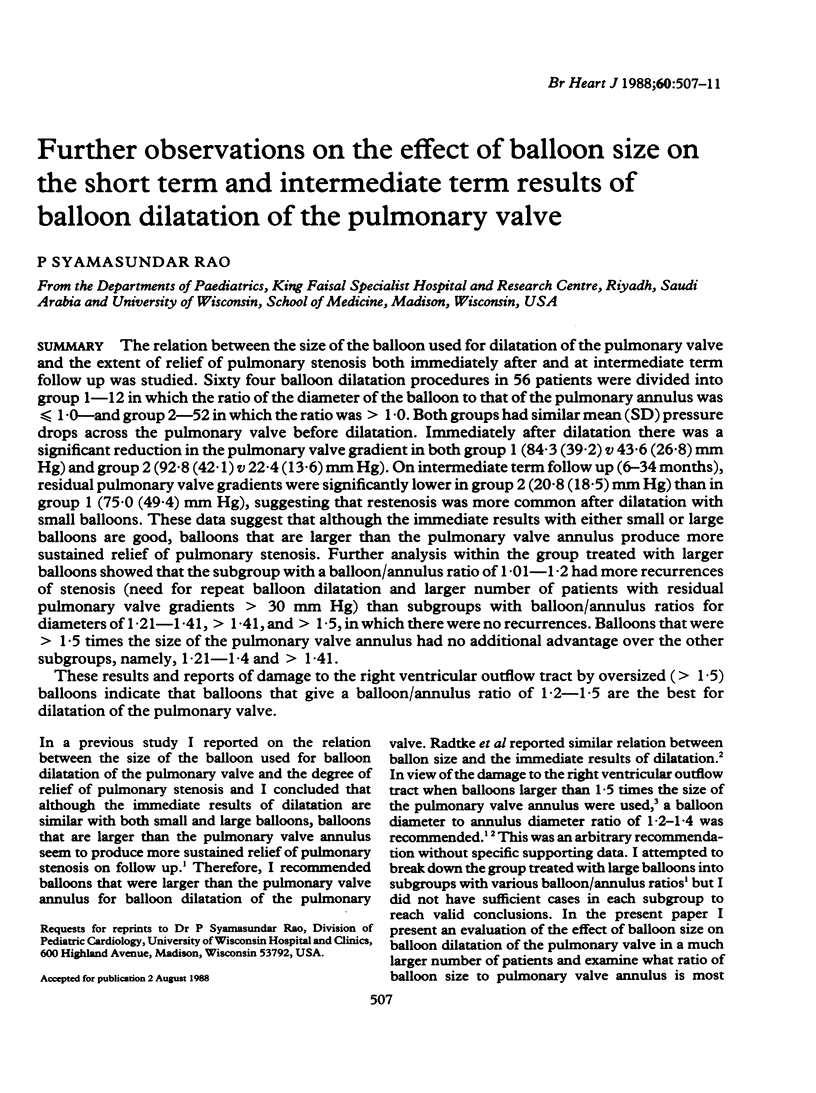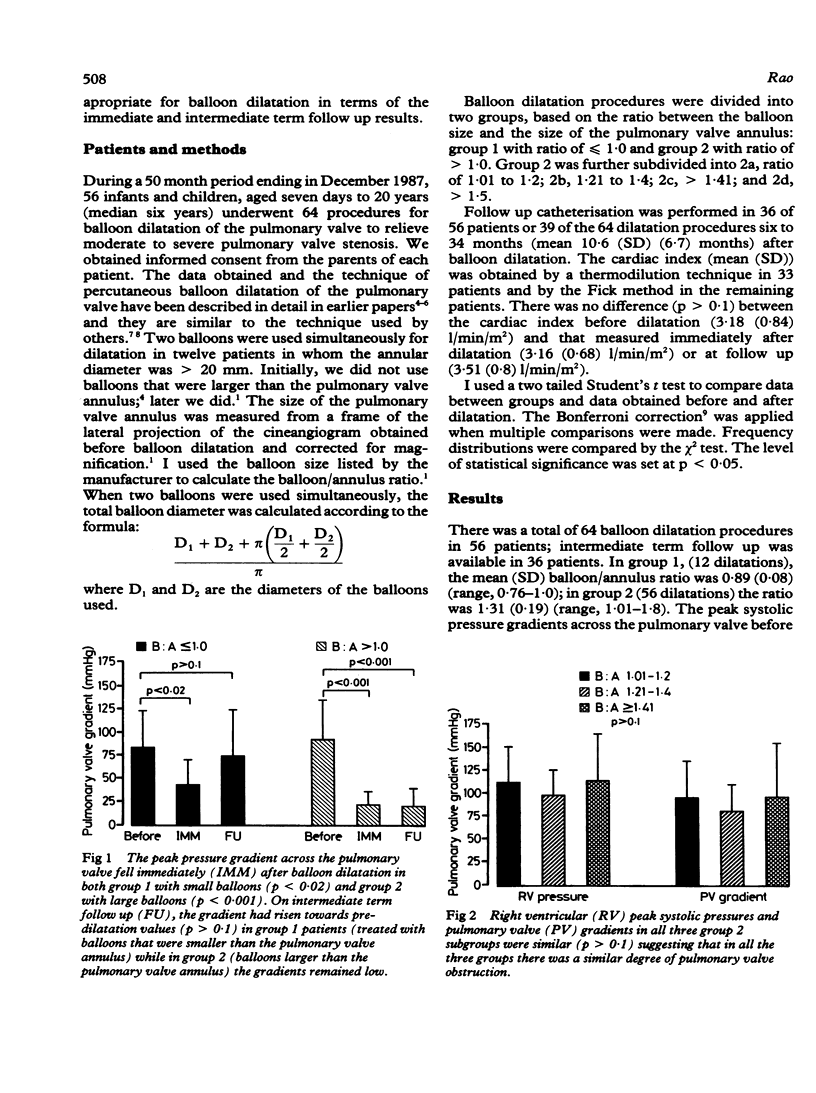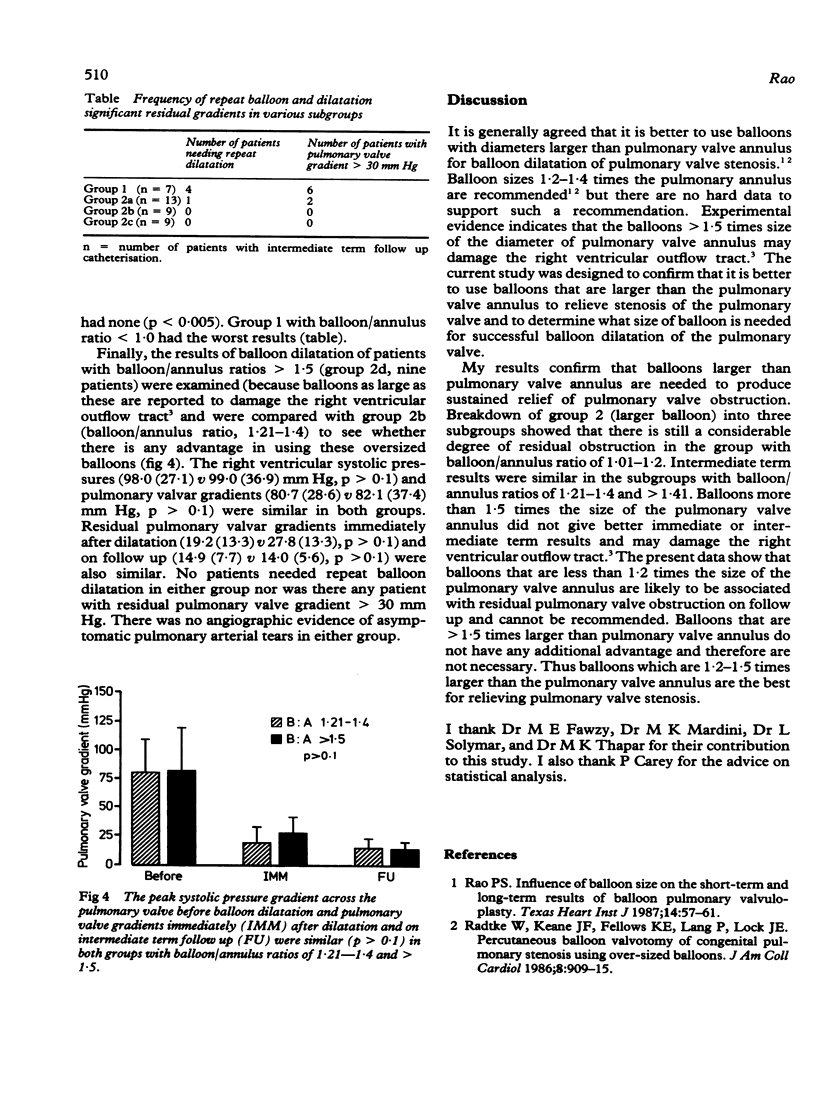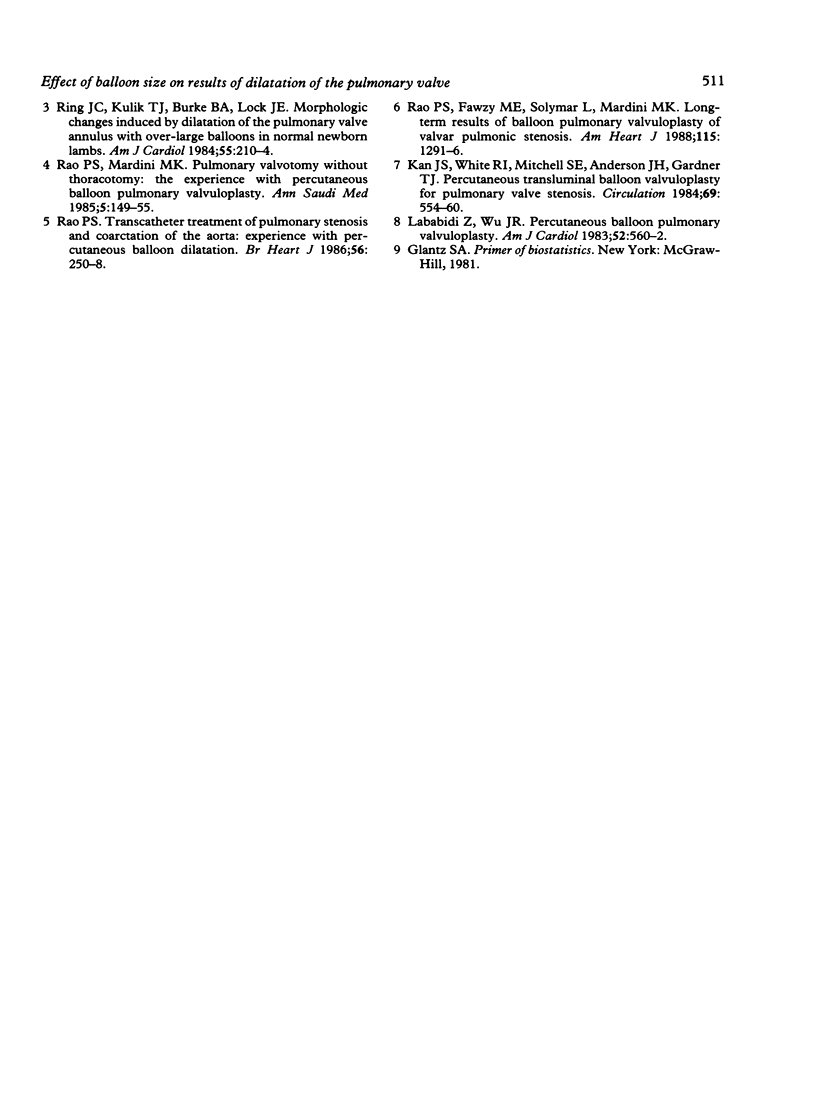Abstract
The relation between the size of the balloon used for dilatation of the pulmonary valve and the extent of relief of pulmonary stenosis both immediately after and at intermediate term follow up was studied. Sixty four balloon dilatation procedures in 56 patients were divided into group 1-12 in which the ratio of the diameter of the balloon to that of the pulmonary annulus was less than or equal to 1.0--and group 2-52 in which the ratio was greater than 1.0. Both groups had similar mean (SD) pressure drops across the pulmonary valve before dilatation. Immediately after dilatation there was a significant reduction in the pulmonary valve gradient in both group 1 (84.3 (39.2) v 43.6 (26.8) mm Hg) and group 2 (92.8 (42.1) v 22.4 (13.6)mm Hg). On intermediate term follow up (6-34 months), residual pulmonary valve gradients were significantly lower in group 2 (20.8 (18.5)mm Hg) than in group 1 (75.0 (49.4) mm Hg), suggesting that restenosis was more common after dilatation with small balloons. These data suggest that although the immediate results with either small or large balloons are good, balloons that are larger than the pulmonary valve annulus produce more sustained relief of pulmonary stenosis. Further analysis within the group treated with larger balloons showed that the subgroup with a balloon/annulus ratio of 1.01-1.2 had more recurrences of stenosis (need for repeat balloon dilatation and larger number of patients with residual pulmonary valve gradients greater than 30 mm Hg) than subgroups with balloon/annulus ratios for diameters of 1.21-1.41, greater than 1.41, and greater than 1.5, in which there were no recurrences. Balloons that were > 1.5 times the size of the pulmonary valve annulus had no additional advantage over the other subgroups, namely, 1.21-- 1.4 and > 1.41. These results and reports of damage to the right ventricular outflow tract by oversized (> 1.5) balloons indicate that balloons that give a balloon/annulus ratio 1.2 -- 1.5 are the best for dilatation of the pulmonary valve.
Full text
PDF




Selected References
These references are in PubMed. This may not be the complete list of references from this article.
- Kan J. S., White R. I., Jr, Mitchell S. E., Anderson J. H., Gardner T. J. Percutaneous transluminal balloon valvuloplasty for pulmonary valve stenosis. Circulation. 1984 Mar;69(3):554–560. doi: 10.1161/01.cir.69.3.554. [DOI] [PubMed] [Google Scholar]
- Lababidi Z., Wu J. R. Percutaneous balloon pulmonary valvuloplasty. Am J Cardiol. 1983 Sep 1;52(5):560–562. doi: 10.1016/0002-9149(83)90026-7. [DOI] [PubMed] [Google Scholar]
- Radtke W., Keane J. F., Fellows K. E., Lang P., Lock J. E. Percutaneous balloon valvotomy of congenital pulmonary stenosis using oversized balloons. J Am Coll Cardiol. 1986 Oct;8(4):909–915. doi: 10.1016/s0735-1097(86)80434-x. [DOI] [PubMed] [Google Scholar]
- Rao P. S., Fawzy M. E., Solymar L., Mardini M. K. Long-term results of balloon pulmonary valvuloplasty of valvar pulmonic stenosis. Am Heart J. 1988 Jun;115(6):1291–1296. doi: 10.1016/0002-8703(88)90023-3. [DOI] [PubMed] [Google Scholar]
- Rao P. S. Influence of balloon size on short-term and long-term results of balloon pulmonary valvuloplasty. Tex Heart Inst J. 1987 Mar;14(1):57–61. [PMC free article] [PubMed] [Google Scholar]
- Rao P. S. Transcatheter treatment of pulmonary stenosis and coarctation of the aorta: experience with percutaneous balloon dilatation. Br Heart J. 1986 Sep;56(3):250–258. doi: 10.1136/hrt.56.3.250. [DOI] [PMC free article] [PubMed] [Google Scholar]
- Ring J. C., Kulik T. J., Burke B. A., Lock J. E. Morphologic changes induced by dilation of the pulmonary valve anulus with overlarge balloons in normal newborn lambs. Am J Cardiol. 1985 Jan 1;55(1):210–214. doi: 10.1016/0002-9149(85)90330-3. [DOI] [PubMed] [Google Scholar]


